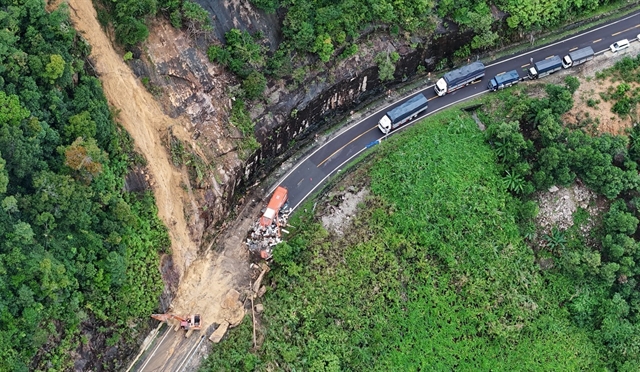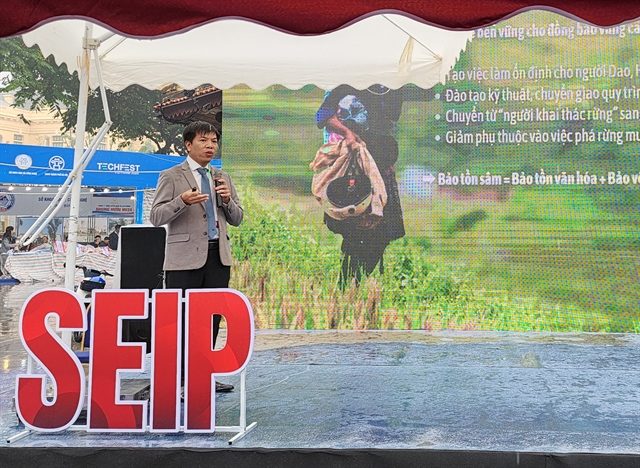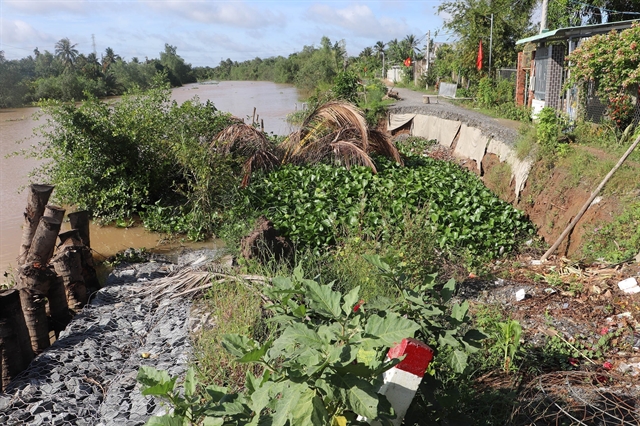 Environment
Environment


|
| A landslide in Đồng Tháp Province. The province is looking into spending over VNĐ160 billion to deal with erosion. — VNA/VNS Photo |
ĐỒNG THÁP — The Mekong Delta province of Đồng Tháp has proposed spending more than VNĐ160 billion (US$6.3 million) to manage riverbank erosion that has affected dozens of communes since early this year.
According to the provincial Department of Agriculture and Environment, over 100 erosion and subsidence sites have been recorded across 29 communes and wards, stretching nearly 15km in total.
Of these sites, response plans have been in place for 68, while 30 others still await funding.
Nguyễn Đức Thịnh, deputy director of the department, said that weak soil structure along the Tiền and Hậu rivers was the main cause, especially in islets, river junctions and narrow sections.
Fish farming, riverside construction and heavy boat traffic have also worsened the situation. In inland canals, strong currents combined with tides, heavy rain and transport activities have made river banks more vulnerable.
Local authorities have warded off dangerous areas, set up warning signs, restricted traffic and guided residents to safer travel routes. Temporary reinforcements have been made to limit damage.
In Hội Cư Commune, a 100m section along Canal 28 has collapsed, threatening nearby fruit farms.
The commune has rushed to temporarily remedy its landslide sites and asked for provincial support to resolve the problem.
More than VNĐ157 billion (US$6.17 million) would be needed to fix over 100 sites, with six major works to be included in the 2026–2030 public investment plan, according to the department.
For the long term, the province has called for regular funding to help localities take proactive measures, while tightening inspections and cracking down on encroachment along rivers and canals. — VNS




